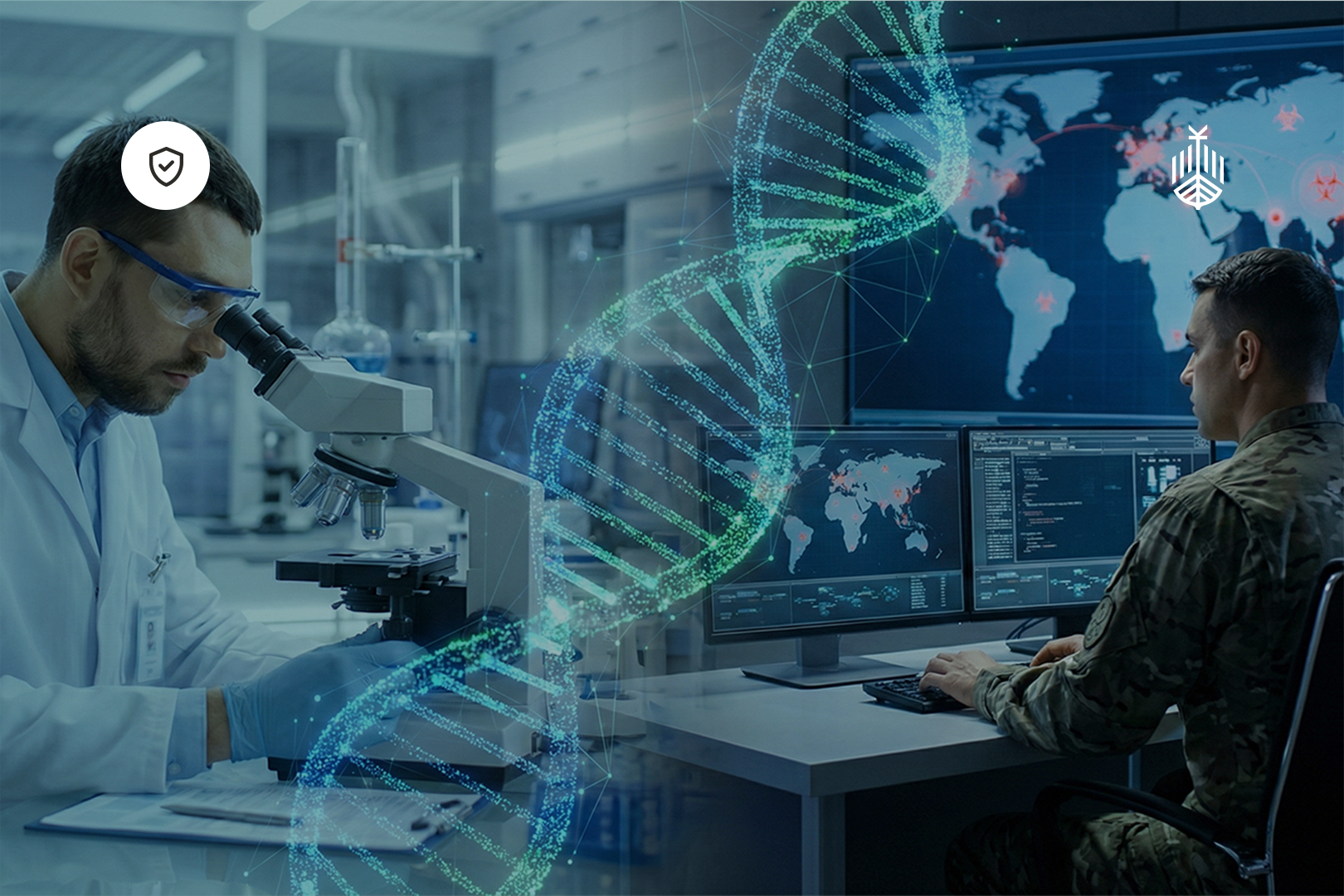The growth of artificial intelligence (AI) has been both rapid and uneven, marking significant strides in industries such as Technology, Finance, and Healthcare, where its applications range from successfully automating customer service calls to enhancing life changing medical diagnostic accuracy. Leaders, and employees, are torn on how AI will impact the work they do and how it gets done, and critically, how that will impact their future roles, status and remuneration.

However, the adoption of AI across different sectors reveals a stark disparity.
In particular, Government institutions have been notably slow in integrating AI into their operations. This sluggish adoption is often attributed to bureaucratic inertia, privacy concerns, and the complexities associated with policy and regulatory frameworks. As a result, while some industries forge ahead, leveraging AI to innovate, streamline and transform, many sectors, including Defence, lag behind. Thus, missing opportunities to leapfrog towards massively improved efficiency and effect.
This uneven pace not only highlights the transformative impact of AI but also underscores the need for a more disruptive, proactive, co-ordinated and forward deployed approach towards AI adoption.
As AI becomes increasingly integral to Defence strategies globally, the choice between gradual evolution and rapid revolution in adopting this technology becomes critical. This article emphasises the need for a revolutionary approach, propelled by personal initiative at all levels, to maintain strategic superiority in an era dominated by rapid, continuous and disruptive technological advancements.
China dominates a hive of AI innovation
According to the Center for Security and Emerging Technologies, the number of AI related publications in scientific journals reached 232 in 2022, almost 3 times the number from a decade before, and the number of AI patents granted jumped 20 times in the same period to 62. Interestingly, over 61% of those patent registrations originated in China, and only 2% coming from the European Union (including the UK).

Looking specifically at Generative AI, according to research by Bommasani et al. published in the Stanford Artificial Intelligence Index Report, Industry is dominating the development of foundational models, a phenomenon likely driven significantly by the compute and financial cost of training them. That said, with only 4 foundational models coming out of Government and none out Industry – Government collaboration it begs the question – why are we slow to move?

Extending Human Capabilities with AI
AI's ability to enhance human capabilities is evident in its application across a range of core organisational operations. By automating routine and complex tasks, AI allows personnel to concentrate on strategic decision-making, leveraging their irreplaceable emotional, creative and social skills where they are most needed. This synergy between human experience and AI capabilities is crucial for developing solutions that are both innovative and immediately applicable to real-world scenarios.
“What's more interesting and important is how we will build Al-augmented organizations that *extend*, not just substitute, what individual people can do today. That's the key to individual and organizational competitiveness.” – Gianni Giacomelli, MIT Centre for Collective Intelligence
The necessity for revolutionary change
While AI offers tremendous potential to extend and amplify our capabilities, the slow pace of institutional adaptation threatens to rob us of strategic advantage as well as the ability to catch up. In a landscape where adversaries are rapidly integrating AI without the constraints typical in more regulated environments, a mere evolutionary approach is inadequate.

AI is increasingly an open-source ecosystem with innovation coming from collaborations that is not contained by organisational boundaries, partnerships or agreements. AI development and innovation has shifted in the last year from being almost entirely the product of the United States & Europe to a position where the vast majority is happening in the rest of the world.
The stakes are high and the need for a change in tempo is undeniable
Shifting the organisational paradigm
To truly harness the potential of AI, defence organisations must not only embrace new technologies but also fundamentally rethink their operational doctrines and systems. This involves breaking away from outdated models and adopting a new framework that prioritises agility, adaptability, and forward-thinking.
One way I encourage organisations to look at this is to compare the difference between an Operating Model and an Operating System.

The role of individual initiative
The cornerstone of this revolutionary change is personal action at all levels. Waiting for top-down directives in a field as dynamic as AI can be detrimental. Military personnel, from the ground troops to the highest ranks, must take proactive steps to understand and implement AI technologies in their daily operations. This personal initiative is vital for driving change from within, ensuring that the defence forces are not only followers but leaders in AI adoption. Often, the most powerful applications of AI are when you combine it with deep, functional, operational expertise, leading to how might we empower our most experienced non-commissioned officers with the power of AI to maximise effect.

Practical Steps for Personal Engagement
Engaging with AI means more than theoretical understanding; it requires practical application. Personnel should start by utilising AI for data analysis, predictive maintenance, and simulation-based training. These hands-on experiences will provide insights into AI’s capabilities and limitations, fostering a culture of innovation and continuous learning.
Synchronising Individual Efforts Through Organisational Roles
For a revolutionary transformation in defence to be effective, the individual actions taken by personnel must be synchronised and amplified through organisational structures that support real-time adaptation. Just as in the tech industry, where Product Managers, Engineers, and DevOps teams work in concert to continuously develop, deploy, and refine software products, defence organisations must evolve to operate similarly.
In this analogy, the defence sector needs to establish roles akin to Product Managers who can identify needs and direct the integration of AI technologies. Engineers would adapt and customise these technologies to fit operational requirements, while DevOps teams would ensure that these AI enabled systems are seamlessly integrated and maintained within the military's operational framework, enabling rapid updates and adaptations as conditions change. This dynamic team structure would allow the organisation to function like a live operating system; constantly updating and improving in real-time based on direct input from the strategic and operational environment and continuous feedback loops.
Conclusion
The integration of AI in defence is a transformative shift that demands more than incremental adjustments. It requires a fundamental revolution in our approach to military capability operations. The choice is clear - evolve slowly and risk obsolescence, or revolutionise and secure future strategic advantage. The time for action is now; let us be the architects of this change.

Footnote
The rate of change in AI is so fast that between drafting this article and publishing it, we have seen meaningful movements across a range of dimensions including models reaching and surpassing human performance against credible benchmarks, the ability of models to consistently self-generate quality code, extension of the range of tasks models can execute reliably, improvements to the moral and ethical judgement they apply resulting in less errors and more impact. If you are interested in taking a short and highly practical course on how to bring AI to your daily work I can highly recommend ‘AI-Enhanced Thinking & Decision-Making’ (of which I have no financial or commercial affiliation to the provider).














